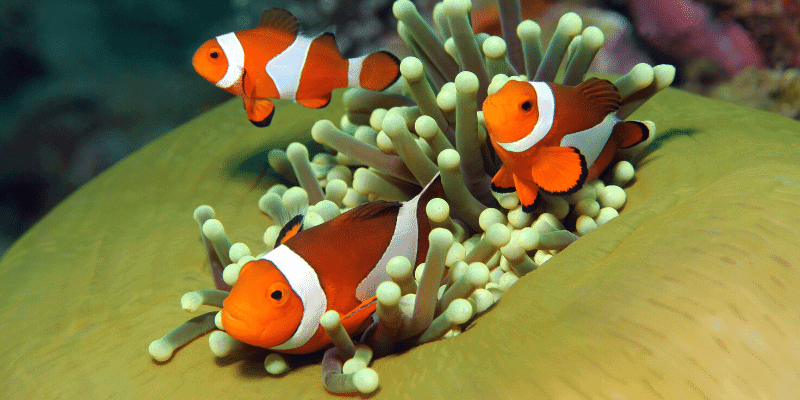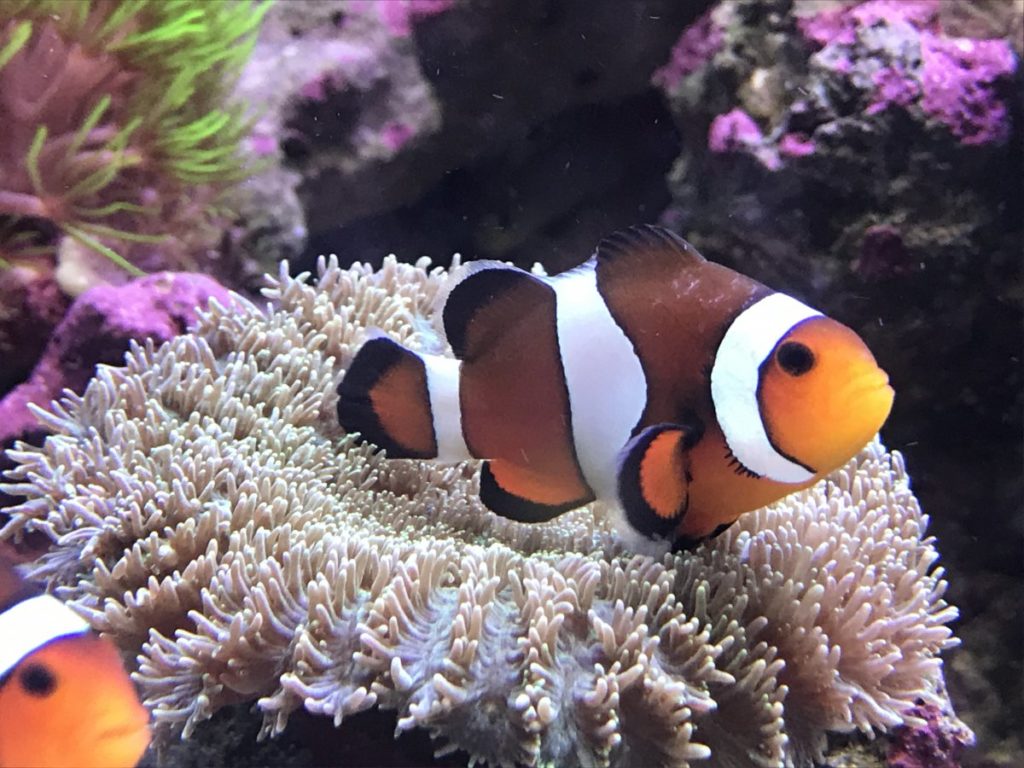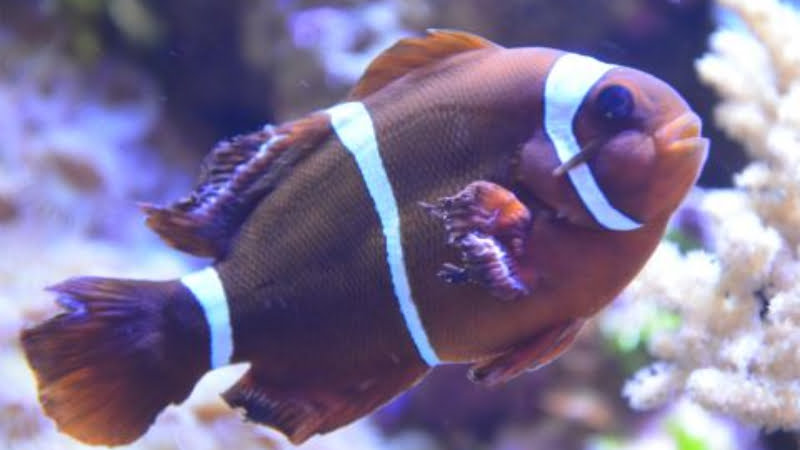A freshwater dip clownfish is a freshwater fish that can be found in the upper reaches of rivers and streams. They are not saltwater fish, which makes them different from their ocean counterparts.
The freshwater dip clownfish, also known as the freshwater anemonefish, is a saltwater fish that can be found in freshwater. These fish are beautiful and fun to watch! This blog post will provide information about freshwater dip clownfish, including what they eat, how to take care of them, and more!
See also:
- Brooklynella Clownfish Disease: Symptoms And Best Treatment.
- Swim Bladder Disease Clownfish (3 Symptoms And Helpful Cure).
Is Clownfish A Freshwater Or Saltwater Fish?
Clownfish are saltwater (marine) fish, which means they cannot thrive in freshwater.
Clownfish is a reef-associated fish, which means it dwells around coral reefs. An adult clownfish lives on coral reefs amid the giant sea anemones. It may also be found in shallow, quiet lagoons.
Clownfish are mostly found in the Indo-West Pacific, the eastern Indian Ocean (including the Andaman and Nicobar Islands), Thailand, Malaysia, northwest Australia, Singapore, Indonesia, and the Philippines, and reaches north to Taiwan.
What Happens If We Put Clownfish (Saltwater Fish) In freshwater?
Clownfish are marine (saltwater) fish that have adapted to their surroundings. Their kidneys and gills are not designed to deal with freshwater. This means that putting a clownfish in freshwater would kill it within minutes.
Osmosis occurs when a saltwater fish is put in freshwater.

This implies that the freshwater will attempt to enter each of the fish cells and balance the quantity of salt in the cells with the amount of water outside. The fish system will be flooded and killed as a result of this.
Some fishes can live in both saltwater and freshwater, but clownfish are not among them. Try Bumblebee gobies or clown loaches if you want a tropical freshwater fish with a similar color scheme.
How To Give Freshwater Dip Clownfish Or Bath
Giving saltwater fishes a brief freshwater dip or bath is one of the easiest and quickest ways to reduce and remove the populations of all sorts of ich organisms, as well as flukes and lice that are parasitic on them. This method of hypersalinity is extremely successful, requires minimal preparation time, and is strongly suggested as the initial step in treating Ich sick fish before sending them in confinement for long-term therapy with the appropriate medication for what ails them.
Safe, Effective Method for Freshwater Dip
Taking a saltwater fish out of saltwater and putting it in freshwater causes stress in the fish; therefore, keep a watch on the treated fish for symptoms of excessive pressure. Agitating the treatment water will keep the fish swimming and decrease stress.

What You Need:
Large enough plastic container to comfortably accommodate the fish to be treated a product that neutralizes ammonia Medication based on nitrofurazone Freshwater is stored in an air pump and an air storage tank (filtered or dechlorinated)
Process:
- Fill a plastic container halfway with a suitable freshwater source, such as RO/DI filtered water. If you must use tap water, make sure you dechlorinate it first.
- To avoid needless shock and stress, attempt to match the pH and temperature of the freshwater to those of the saltwater aquarium water.
- Add an ammonia neutralizing agent to the treated water to avoid ammonia buildup. AmQuel by Kordon, which is also a dechlorinate, is highly recommended for this purpose.
- Although this is not required, it is advised that some sort of antibiotic medicine be added to the treated water. Because the fish will be confined in a limited quantity of water, most likely with other fish, the freshwater will force them to release waste, which will most likely contaminate the water. To prevent the fish from being exposed to their own waste throughout the operation, a nitrofurazone-based solution works effectively.
- During treatment, keep the water aerated vigorously. The easiest method is to place an air stone attached to an aquarium air pump into the container.
- Remove all of the fish from the contaminated aquarium and place them in freshwater. If you have a large number of fish to cure, don’t overcrowd the container. You can treat small groups of people at a time, changing the water after each group has been treated.
- For the greatest outcomes, fish should stay in fresh water for three to four minutes. Remove any fish that shows symptoms of excessive stress after a minute or two.
Tips
- Don’t be concerned if the fish drop to the bottom on their sides and do not move; they generally right themselves and begin moving about within the first minute. If you’re worried, stir them a little to get them moving, and if any fish appears to be particularly agitated, remove it.
- Set aside some additional treatment freshwater to be utilized for water changes during the operation if the water gets contaminated with waste.
- If you do not intend to quarantine new fish before introducing them into the main tank, you may at least give them a brief freshwater dip as a preventative step, as long as they show no indications of stress from being in transportation.
Some Other Related Questions
How long can you freshwater dip clownfish?
For the best results fish should remain in the freshwater for a duration of three to four minutes.
Will a freshwater dip kill Ich?
Icy will not be eradicated by taking a freshwater bath. It may give some relief, but you’ll need to treat with something else, like copper or CP, then let the display tank fallow for 76 days.
What does a freshwater dip do?
Unlike most other treatments, a freshwater dip kills parasites while they are still on the fish, rather than waiting for them to go through the entire reproductive cycle.
Conclusions
Clownfish are marine (saltwater) fish that have adapted to their surroundings. Their kidneys and gills are not designed to deal with freshwater. This means that putting a clownfish in freshwater would kill it within minutes. So, before freshwater dips clownfish, you need to read more information to avoid serious consequences.

Annette M. Chaney is an experienced marine biologist with over 20 years of experience as an aquarist and fishkeeper. She started her first aquarium at a young age, filling it with frogs and goldfish obtained from the ten-cent pet store.
Annette grew up caring for and breeding African Cichlids, which led to a hobby in high school that doubled as a profitable means. Attending Reed College gave her time to solidify herself as an accomplished aquarium caretaker with an eye for sales. After that, from 2009 – 2013, she studied at Roger Williams University – one of the most prestigious universities for Aquaculture and Aquarium in USA. She is the founder of AquariumCircle since 2010.
